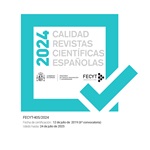El adecuado equilibrio entre el respeto del CEDH y la aplicación del Convenio de la Haya de 1980 (Nota A X C. Letonia).. (RI §414772)

Duly balancing the European Convention of Human Rights and the Hague Convention 1980 on International Abduction (Case X V. Latvia) -
Elena Rodríguez Pineau
Tradicionalmente se había entendido que la jurisprudencia del TEDH en aplicación del CEDH en cuestiones de sustracción internacional de menores en el marco del Convenio de La Haya de 1980 (CH 1980) potenciaba una correcta aplicación de este Convenio y garantizaba la consecución de sus fines. Sin embargo, con el asunto Neulinger y Shuruk c. Suiza y la jurisprudencia que le siguió, el TEDH generó una situación de desconcierto que ha estimado pertinente reconducir con la sentencia de la Gran Sala en el asunto X c. Letonia. Con esta decisión el TEDH consigue encontrar el equilibrio entre las exigencias del CH 1980 y la necesidad de valorar el interés superior del menoren un contexto distinto de aquel en el que el CH 1980 fue inicialmente redactado.
I. INTRODUCCIÓN. 1. Hechos del caso. 2. La sentencia del TEDH. II. EL CH1980 A LA LUZ DEL CEDH. 1. La finalidad del CH 1980 y el respeto de los derechos humanos. 1.1. Elementos básicos del Convenio de La Haya de 1980. 1.2. La proyección del artículo 8 CEDH. 2. El asunto Neulinger y Shuruk c. Suiza. 2.1. Hechos y solución del asunto Neulinger y Shuruk. 2.2. Críticas a Neulinger y Shuruk. 2.3. Una lectura más benévola de la sentencia. III. ¿Qué APORTa el asunto X c. Letonia en el marco de esta jurisprudencia del TEDH?1. La evolución de la jurisprudencia tras Neulinger y Shuruk c. Suiza. 2. El asunto X c. Letonia. 2.1. La posición mayoritaria.2.2. El voto concurrente del juez Pinto de Albuquerque. 2.3. Valoración de la sentencia. IV. LA NECESIDAD DE ABORDAR EL FUNCIONAMIENTO DEL CH 1980 DESDE LAS CIRCUNSTANCIAS ACTUALES EN QUE DEBE APLICARSE.
It was generally understood that the ECtHR case-law on Article 8 ECHR hadfosteredthecorrect application of The Hague Convention 1980 on international child abduction. It was also agreed that such jurisprudence helped to fulfill the aims of the former, i.e the immediate restitution of the child unless there is justified reason not to do it.However, the ECtHR’s decision in Neulinger and Shuruk v. Switzerland and itslater case-law seemed to bring about a sea change.Such was the uncertainty caused that the Court seems to have deemed necessary to redirect its jurisprudence in caseX v. Latvia. In this recent decision the ECtHR’s Grand Chamber finds an adequate balance between the requirements of The Hague Convention 1980 and the need to consider the best interest of the child in the present context which certainly differs from the one in which The Hague Convention 1980 rules were drafted.

 DIRECCIÓN / MANAGEMENT
DIRECCIÓN / MANAGEMENT